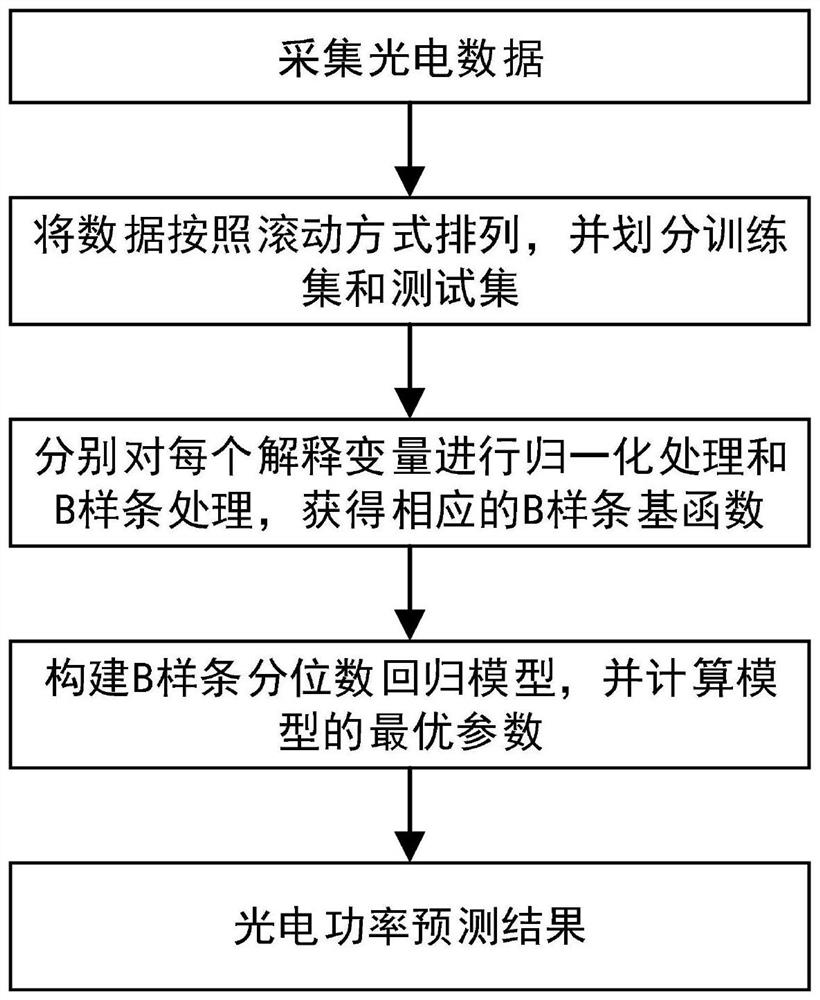An optoelectronic probability density prediction method based on b-spline quantile regression
A technique of quantile regression and probability density, applied in forecasting, data processing applications, complex mathematical operations, etc., can solve the problems of measuring uncertainty and low reliability of photovoltaic power generation
- Summary
- Abstract
- Description
- Claims
- Application Information
AI Technical Summary
Problems solved by technology
Method used
Image
Examples
Embodiment Construction
[0044] In this embodiment, a photoelectric probability density prediction method based on B-spline quantile regression, such as figure 1 As shown, follow the steps below:
[0045] Step 1. Collect photoelectric historical data set R=(r 1 ,r 2 ,...,r i ,...,r N ), where r i is the photovoltaic power data at the i-th time point in the photovoltaic historical data set R, 1≤i≤N, and N is the total number of data in the photovoltaic historical data set R; this stage is mainly to obtain the normal photovoltaic power generation data set used for prediction.
[0046] Step 2. According to the photoelectric power data of the first K time points in the photoelectric historical data set R, use the rolling arrangement method to predict the photoelectric power data of the K+1th time point through the photoelectric power data of the first K time points, and obtain n× (K+1)-dimensional matrix (X, Y), where X=(x 1 ,x 2 ,...,x k ,...,x K ) is the input variable, x k is the kth input va...
PUM
 Login to View More
Login to View More Abstract
Description
Claims
Application Information
 Login to View More
Login to View More - R&D
- Intellectual Property
- Life Sciences
- Materials
- Tech Scout
- Unparalleled Data Quality
- Higher Quality Content
- 60% Fewer Hallucinations
Browse by: Latest US Patents, China's latest patents, Technical Efficacy Thesaurus, Application Domain, Technology Topic, Popular Technical Reports.
© 2025 PatSnap. All rights reserved.Legal|Privacy policy|Modern Slavery Act Transparency Statement|Sitemap|About US| Contact US: help@patsnap.com



